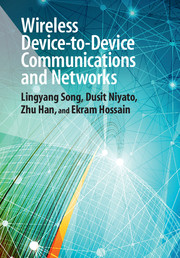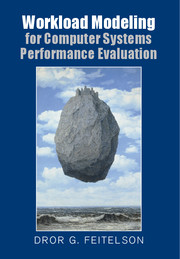Refine search
Actions for selected content:
48274 results in Computer Science
OSO volume 20 issue 1 Cover and Back matter
-
- Journal:
- Organised Sound / Volume 20 / Issue 1 / April 2015
- Published online by Cambridge University Press:
- 05 March 2015, pp. b1-b2
- Print publication:
- April 2015
-
- Article
-
- You have access
- Export citation
OSO volume 20 issue 1 Cover and Front matter
-
- Journal:
- Organised Sound / Volume 20 / Issue 1 / April 2015
- Published online by Cambridge University Press:
- 05 March 2015, pp. f1-f2
- Print publication:
- April 2015
-
- Article
-
- You have access
- Export citation
Past and Current Tendencies in Technology-Based Music
-
- Journal:
- Organised Sound / Volume 20 / Issue 1 / April 2015
- Published online by Cambridge University Press:
- 05 March 2015, pp. 30-36
- Print publication:
- April 2015
-
- Article
- Export citation
Paradigm Shifts and Electroacoustic Music: Some personal reflections
-
- Journal:
- Organised Sound / Volume 20 / Issue 1 / April 2015
- Published online by Cambridge University Press:
- 05 March 2015, pp. 105-110
- Print publication:
- April 2015
-
- Article
- Export citation
Organising Organised Sound: A coming of age
-
- Journal:
- Organised Sound / Volume 20 / Issue 1 / April 2015
- Published online by Cambridge University Press:
- 05 March 2015, pp. 37-39
- Print publication:
- April 2015
-
- Article
- Export citation
The Role of Apps in Electroacoustic Music: A new dimension for music through tablets and other devices
-
- Journal:
- Organised Sound / Volume 20 / Issue 1 / April 2015
- Published online by Cambridge University Press:
- 05 March 2015, pp. 99-104
- Print publication:
- April 2015
-
- Article
- Export citation
Recollections and Reflections on Organised Sound
-
- Journal:
- Organised Sound / Volume 20 / Issue 1 / April 2015
- Published online by Cambridge University Press:
- 05 March 2015, pp. 15-22
- Print publication:
- April 2015
-
- Article
- Export citation
Describe, Transcribe, Notate: Prospects and problems facing electroacoustic music
-
- Journal:
- Organised Sound / Volume 20 / Issue 1 / April 2015
- Published online by Cambridge University Press:
- 05 March 2015, pp. 60-67
- Print publication:
- April 2015
-
- Article
- Export citation
Douglas Kahn. Earth Sound Earth Signal: Energies and Earth Magnitude in the Arts.Berkeley: University of California Press, 2013. ISBN:978-0-52025-755-9
-
- Journal:
- Organised Sound / Volume 20 / Issue 1 / April 2015
- Published online by Cambridge University Press:
- 05 March 2015, pp. 135-138
- Print publication:
- April 2015
-
- Article
- Export citation
Briefly mentioned - François Delalande, Analyser la musique, pourquoi, comment? [Music analysis – why, how?]. Paris: INA Éditions: Collection Ina EXPERT, 2013. ISBN: 978-2-86938-201-5 - Ricciarda Belgiojoso, Constructing Urban Space with Sounds and Music. Farnham and Burlington, VT: Ashgate, 2014. ISBN: 978-1-47242-464-8 (hardcover); 978-1-47242-465-5 (eBook – PDF); 978-1-47242-466-2 (eBook – ePUB)
-
- Journal:
- Organised Sound / Volume 20 / Issue 1 / April 2015
- Published online by Cambridge University Press:
- 05 March 2015, pp. 139-140
- Print publication:
- April 2015
-
- Article
- Export citation
Diversity, Interdisciplinarity, Language and House Style
-
- Journal:
- Organised Sound / Volume 20 / Issue 1 / April 2015
- Published online by Cambridge University Press:
- 05 March 2015, pp. 10-14
- Print publication:
- April 2015
-
- Article
- Export citation
Listening With Machines: A shared approach
-
- Journal:
- Organised Sound / Volume 20 / Issue 1 / April 2015
- Published online by Cambridge University Press:
- 05 March 2015, pp. 68-75
- Print publication:
- April 2015
-
- Article
- Export citation
Developing Telematic Electroacoustic Music: Complex networks, machine intelligence and affective data stream sonification
-
- Journal:
- Organised Sound / Volume 20 / Issue 1 / April 2015
- Published online by Cambridge University Press:
- 05 March 2015, pp. 90-98
- Print publication:
- April 2015
-
- Article
- Export citation
Interaction as Material: The techno-somatic dimension
-
- Journal:
- Organised Sound / Volume 20 / Issue 1 / April 2015
- Published online by Cambridge University Press:
- 05 March 2015, pp. 82-89
- Print publication:
- April 2015
-
- Article
- Export citation

Wireless Device-to-Device Communications and Networks
-
- Published online:
- 05 March 2015
- Print publication:
- 12 March 2015

Workload Modeling for Computer Systems Performance Evaluation
-
- Published online:
- 05 March 2015
- Print publication:
- 23 March 2015
Hugh Davies’s Electronic Music Documentation 1961–1968
-
- Journal:
- Organised Sound / Volume 20 / Issue 1 / April 2015
- Published online by Cambridge University Press:
- 05 March 2015, pp. 111-121
- Print publication:
- April 2015
-
- Article
- Export citation
Technique, Creation, Perception and Experience in the Learning of Electroacoustic Music: Some practical proposals
-
- Journal:
- Organised Sound / Volume 20 / Issue 1 / April 2015
- Published online by Cambridge University Press:
- 05 March 2015, pp. 40-50
- Print publication:
- April 2015
-
- Article
- Export citation
The UbuWeb Electronic Music Corpus: An MIR investigation of a historical database
-
- Journal:
- Organised Sound / Volume 20 / Issue 1 / April 2015
- Published online by Cambridge University Press:
- 05 March 2015, pp. 122-134
- Print publication:
- April 2015
-
- Article
- Export citation
Extractive summarization of multi-party meetings through discourse segmentation
-
- Journal:
- Natural Language Engineering / Volume 22 / Issue 1 / January 2016
- Published online by Cambridge University Press:
- 04 March 2015, pp. 41-72
-
- Article
- Export citation
